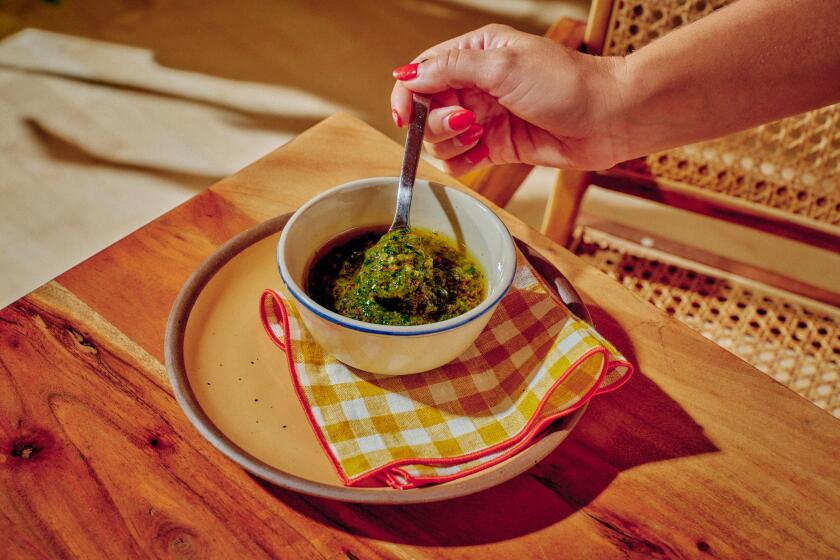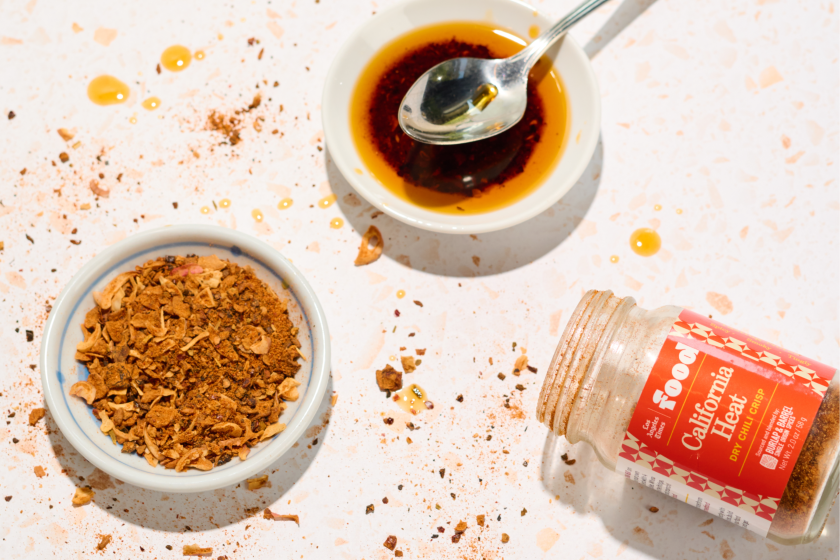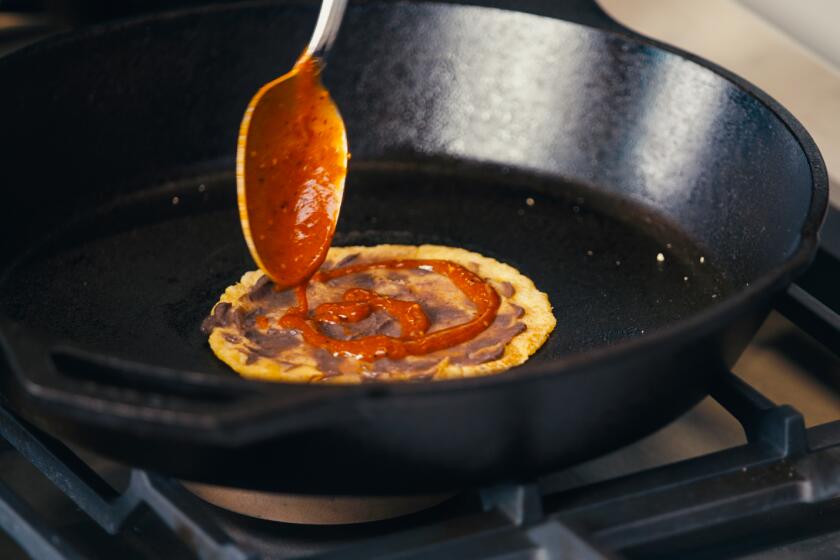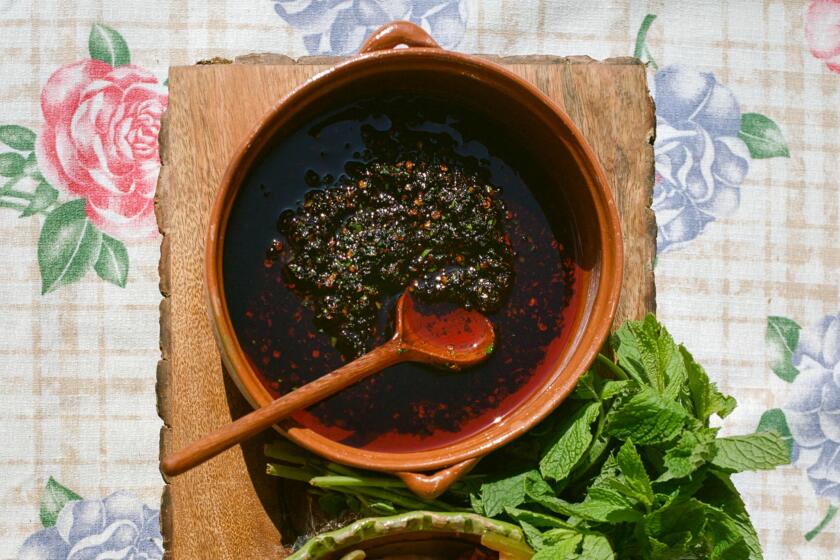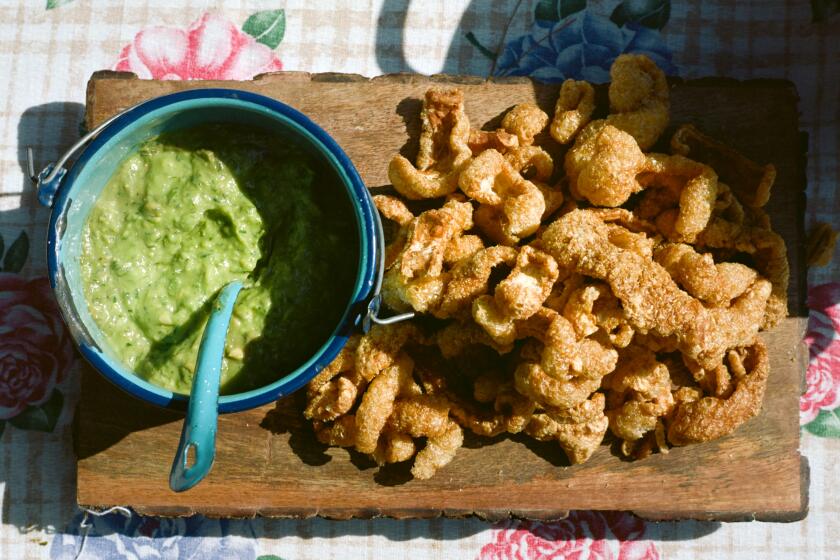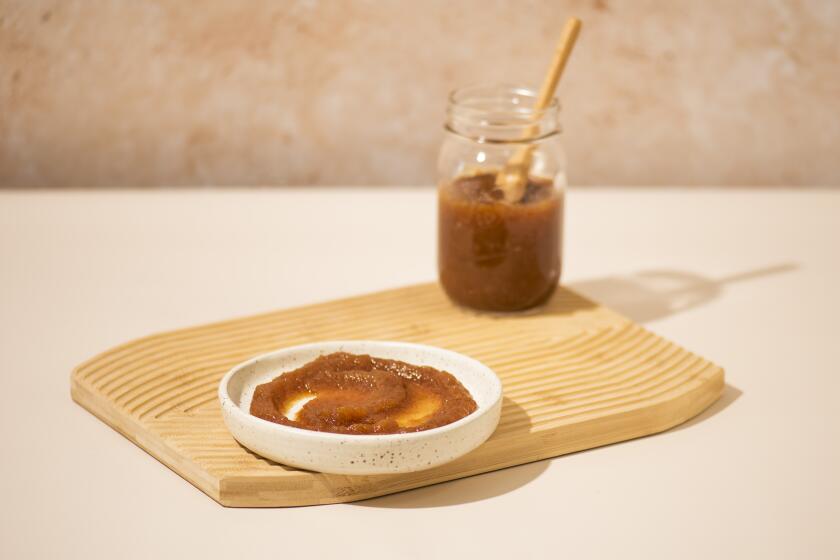Jeremiah Tower's Montpellier butter

If Harrods food hall were burning and I could grab only one thing before I ran from the store that has everything, it would be butter. Not milk, not cream, not Somerset Cheddar, not Normandy Brie. Not one of those holds a candle to butter. No other food has anything close to butterâs concentrated goodness of clover, alfalfa, rye, dandelions and grass.
Butter has the taste of a flower, but rich. The first bite in spring is like youâve rolled down a grassy slope on a sunny day, eating cake. Itâs the distillate of meadow, waiting to be spread across a piece of bread, after which, depending on your mood, it will need a sprinkling of salt or a spoonful of jam. Butter is why dairy farmers farm, chefs cook and this eater eats.
Butterâs so good that Catholics give it up during Lent as a show of piety, though on a traditional farm, that is about as big a sacrifice as giving up sunshine at midnight. Dairy cows only give the milk that provides the cream that provides the butter after theyâve calved. Traditionally, farmers time breeding so they calve in the spring, and the milk only starts flowing around Easter.
Butter is the best of that milk, the cream of the cream. Itâs made by skimming cream from milk, cooling it to just below room temperature, then agitating that cream so its most congenial fats, the ones in which all the best milk flavors reside, huddle up in glorious globules as the watery buttermilk drains out. These globules are then either salted or left sweet, and churned to a smooth, golden mass.
Thatâs the most basic butter. For a nuanced taste, and the potential for improvement in aging, Europeans add a bacterial culture to the cream, so that it ferments slightly before churning. This will digest lactic acids, producing the complex flavors that keep drawing our knives back to the butter.
*
American vs. European
Dairy technologists will tell you that the difference between European and American butter is merely textural -- a question of fat content. Indeed, our commodity butters contain the 80% fat required by law, and European butters have more like 84% to 86%. American dairies that do not stint on the fat, such as the organic Straus Family Creamery, routinely label their butter âEuropean styleâ because of its richness, but the complexity is lacking.
Allison Hooper of Vermont Butter & Cheese dares us to buy any French butter -- President, Isigny, Echire -- and fail to notice the difference. It will have the character, the irresistibility, so lacking in most American butter. The ingredients panel will list âlactic starter.â When Hooper started making cultured butter five years ago, French chefs in New York went nuts for it. âThey all said, âThis is what we remember from home,â â she says. Occasionally Vermont Butter & Cheese cultured butter graces the shelves of West Coast Whole Foods stores. If you see it, buy it. It is superb, and as important as any new American cheese.
But it somehow seems right and proper that the best butter comes from France. French cuisine is built on it. There are the butter sauces, bearnaise, hollandaise. Butter makes a Wednesday night gravy sublime: Deglaze a pan with vinegar, add a knob of butter and you have instant sauce. There is butter on noodles, butter dotted on chicken before roasting, anchovy butter with garlic and rosemary packed over a leg of lamb, then roasted with half a bottle of white wine and the juice of a lemon. There is the beautiful butter seal over little ramekins of chicken liver pate.
Nowhere does butter do more glorious service than in French pastry. Imagine a croissant with margarine. Second thought, letâs not. Butterless puff pastry, impossible. Olive oil cake is interesting -- once.
Even Americans are roused by butter. All it takes is a whiff wafting off a warm piece of toast or a baked potato. Unlike olive oil, which often has green and fiery notes, butter is never strident. Nothing marries so well with the deep mineral flavors of spinach. The more butter you melt into blanched spinach leaves, the happier the marriage. Too much is enough.
To test the congeniality of molten butter with new-season vegetables, put out an olive oil vinaigrette with a plate of boiled spring artichokes. Then next to it put out melted butter with salt, cracked black pepper and lemon. Now just watch which bowl will be dunked to dryness the fastest.
This is not to bash olive oil. Butter has no business on salad or tomato. Sometimes one can be substituted for the other. Butter and olive oil can even be blended together: Witness pesto. But it would be a crime to put olive oil on peas if butter were in the house.
And so to the frying pan. Again, butter is the most congenial in its class. Nothing greases a skillet more tantalizingly. The smell of a just caramelizing knob will call a family to the table faster than a dinner bell. It will leave a nutty imprint on the skin of even the blandest white fish. Always prefer butter for sauteing mushrooms. It doesnât compete with their woodsiness, just adds rich back notes.
The only danger in sauteing is the innate delicacy of butter. It burns easily compared with oil. Cooking schools have elaborate charts posted around their kitchens listing various smoking points of butter (low), olive oil (medium), peanut oil (high). The time-honored way to protect butter as you heat the pan is to heat a touch of oil, heat the pan, pour off the excess, add butter, reduce heat and proceed to saute for that good butter flavor.
No Indian cookbook is complete without instructions to clarify butter, or cook off the water, to make ghee. This has a higher smoking point and imparts an intense butter flavor, provided that, unlike me, you donât ruin it by browning the butter in the process. (NB:Surfas in Culver City sells ready-made ghee.)
But sometimes browning the butter is the whole point. Chef Nancy Silverton likes playing butter for its full flavor range, from raw to near burnt. She made Sandwich Night a cult at Campanile in part by packing the prosciutto baguettes with fresh butter -- but, in the case of the open-faced sandwich with roasted asparagus, fried egg and cured pork, garnishing it with browned butter.
The most surprising place Silverton uses browned butter is in her pastries. Where she wants a caramelized complexity (think gingerbread tang), she might brown the butter and then chill it, before creaming it with sugar and baking powder for a batter. (On the subject of creaming: Silverton recommends ignoring the conventional instruction to sift in baking powder or baking soda with the flour. Rather, always cream it with the butter, she says. This will ensure that it is distributed more evenly and lessen the chance of that evil, concentrated baking soda flavor in your cakes and cookies.)
*
Store with care
The downside to butterâs equanimity with other flavors is that it is so susceptible to vile influences. If Americans donât appreciate the sublime delicacy of butter, it is not just the fault of fad diets and food technologists but of the funky state of so many of our refrigerators. Butter might go into the fridge as blameless as a spring meadow, but it can come out only hours later redolent of the mold on the rotting berries next to it.
We can do our part by cleaning up our acts and wrapping butter tightly in plastic wrap. However, the current standard packaging of wax paper and paraffin-coated boxes is a century old. If American butter deserves a new start, it will need a new package.
In the meantime, Silverton recommends that we wrap it in plastic and store it in the freezer, grating it as we need it. In France, all butter is sold in aluminum foil.
Butter is such a luxury that recipes involving it suffered terrible indignities during World War II. This butter tart recipe endured a decade of Crisco substitutions, says Audrey Haas, the friend who I begged to part with it. It was so badly mucked about that she went to Union Bakery in South Pasadena for help restoring it to a true and proper state. It was her motherâs, says Haas, from her countrified past back in Ontario, Canada. Her aunts evidently had their own versions; however, one taste of this and, I think you will agree, the aunts need not apply.
A second recipe, Jeremiah Towerâs Montpellier butter, is a souped-up sauce for fish. All it needs is some fried Dover sole, boiled new potatoes and a bottle of Chablis to constitute a vacation on a plate. (Donât worry about extra; freeze it in an ice cube tray for fish dinners to come.)
The third recipe is for buttercream. It comes from Michel Roux, brother of Albert, uncle of Michel Roux Jr., the three best chefs in the British Isles and owners of the Waterside Inn at Bray and Le Gavroche in London. Here the buttercream goes into the classic French strawberry dessert fraisier, along with spongecake, syrup and fruit. It could just as easily go on French toast or a spicy boiled pudding. âThe beauty of buttercream,â says the youngest Michel, âis you get richness and lightness at the same time.â
The beauty of it is that it has butter.
Blanch the spinach, watercress leaves, herbs and shallots in boiling water for 1 minute. Drain, refresh under cold water and squeeze to remove excess moisture.
Put them in a food processor or blender and add the gherkins, anchovies, capers, garlic, salt, pepper and cayenne. Puree to a smooth paste, adding one-fourth cup olive oil to help the mixture puree if necessary, then add the egg yolks and the butter, and process again until thoroughly mixed.
With the machine running, pour the remaining olive oil in a thin stream. The mixture should be glossy and as smooth as velvet. Add the vinegar and check the seasoning.
Get our Cooking newsletter.
Your roundup of inspiring recipes and kitchen tricks.
You may occasionally receive promotional content from the Los Angeles Times.










